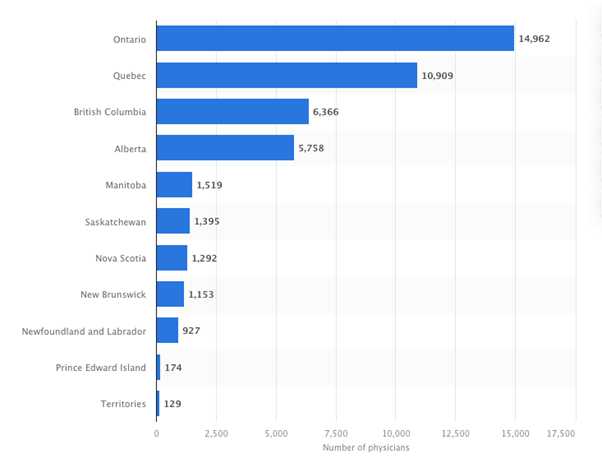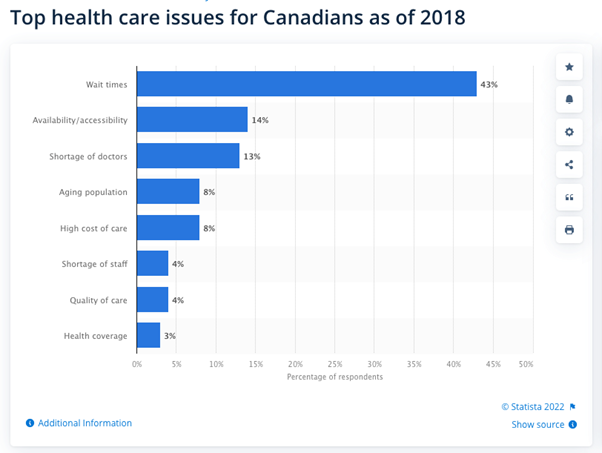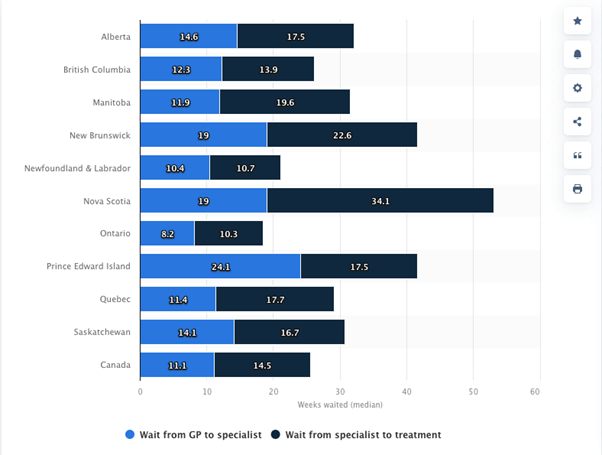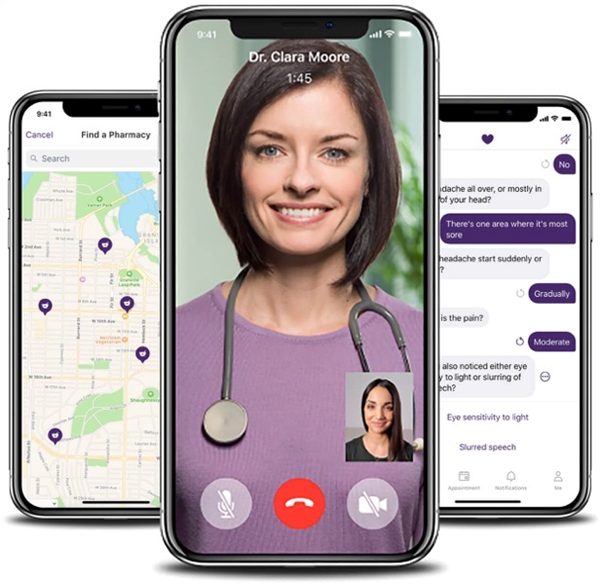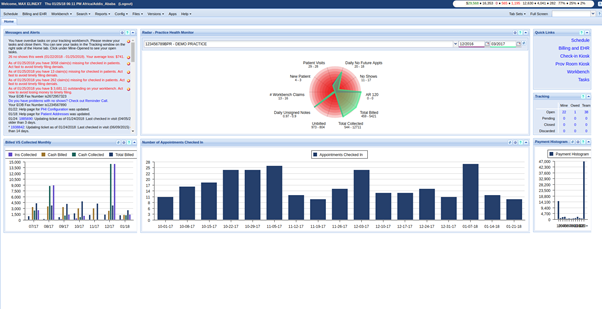The Canadian healthcare system is considered one of the most developed and effective in the world. For example, Canada was ranked 14th out of 167 countries in terms of healthcare quality according to CEOWorld Magazine’s Health Care Index. It is based on five main principles:
- Public administration – the administration of government agencies on a non-profit basis, accountable to the government of the province or territory;
- Comprehensiveness – the state covers all the required medical services;
- Universality – universal coverage of citizens with health services;
- Accessibility – the absence of any financial or other barriers for the population in accessing medical services;
- Portability – the insurance covers all the citizens regardless of the province or territory of their residence. It covers the cost of some emergency medical services while they are abroad as well.
However, even a well-established Canadian healthcare system has some serious challenges that can be solved with the help of digital technologies and custom software solutions. Before we discuss these problems and suggest ways to improve the quality of care, let’s take a closer look at the system, known as Medicare.
Healthcare in Canada: How does it work?
Medical care in Canada is almost free for the citizens as it’s partly funded by the state. Each province or territory is responsible for the administration and provision of health services in the country. The Canadian healthcare system is based on primary care physicians who make up almost 51% of all general practitioners in the country. The figure below shows the number of family physicians in Canada as of January 2019 by province. As you can see, most family doctors are concentrated in Ontario.
Source: Statista
Family doctors examine patients, prescribe medicines, and, when required, refer them for a more serious examination or to a specialist. Canadians can choose and change their family doctor at will at any time. Canadian practitioners can have their own practice or work in hospitals. According to Statista, there were more than 1,200 hospitals in Canada in 2020. Most of them (more than 900) are municipal, and the rest are private. They are divided into referral and specialized hospitals. Public health facilities are usually run by local boards of directors.
In spite of the fact that Canada is a highly developed country, the healthcare there is experiencing a number of issues, such as long waiting times for treatment, accessibility, shortage of qualified personnel, high cost of treatment, poor quality medical services, lack of modern medical equipment, inefficient spending on medicines, and insufficient access to new pharmaceuticals. It clearly shows on the figure below provided by Statista.
Source: Statista
Many problems can be solved with the help of digital solutions, which include mhealth technologies, electronic document management, medical analytics, and telemedicine. A Healthy Dialogue revealed that 80% of Canadians think that the government should invest in healthcare digital technologies.
Modern software and apps allow patients and physicians to quickly receive all the necessary information, increase the efficiency and effectiveness of medical care, remove routine administrative tasks, and also provide additional quality control of medical services. Let’s take a closer look at how innovations and advanced technologies will help Canadian patients and healthcare professionals.
What issues does the Canadian healthcare system have?
According to the figure above, 43% of Canadians are dissatisfied with long waiting times for medical care. Another figure provided by Statista demonstrates how many weeks the residents of Canada should wait in 2021 in order to get the required treatment. For example, it takes 14.6 weeks in Alberta to get an appointment with a specialist, while the wait time from the specialist to treatment is 17.5 weeks.
Source: Statista
It’s a great problem because it doesn’t matter whether patients suffer from acute/chronic pain or they’re in a particularly serious condition – they have to wait for a doctor’s appointment. Excessively long waiting times are explained by the fact that before getting to a specialist, people should refer to their family doctor, whose time is also limited.
The Fraser Institute also revealed that Canadian patients had to wait 25.6 weeks (nearly 6 months) for treatment in 2021. This is the longest waiting time in the country’s history. That’s more than the 22.6 weeks in the first year of the COVID-19 pandemic in 2020, and 175% more than the 9.3-week average wait time recorded in 1993 when the Fraser Institute started tracking how long people wait for medical care.
This problem results from another health care issue, which is a shortage of physicians in Canada. A dearth of doctors can be explained by many factors, such as restrictions to hire migrant physicians, migration of doctors to the US, their aging, unwillingness to study at medical schools due to high cost and work in rural areas. Experts found that 19% of the Canadian population lives there, and only 8% of doctors are available to them.
In the opinion of Tim Gest, president of the Canadian Nurses Association (CNA), back settlements experience problems with medical staff due to the fact that local doctors are retiring. In addition, many practitioners left the service because of the pandemic, which led to an enormous burden on medical personnel. A lot of doctors complained of physical and moral burnout and decided to end their careers. According to Statistics Canada, the number of new vacancies in healthcare grew by 56.9% during the last quarter of 2020.
So, how can these problems be solved using modern technology and custom software development?
Healthcare apps help Canadian doctors and patients
Telehealth applications and services are one of the effective ways to deal with the above-mentioned issues. These are solutions that connect medical professionals and patients from all over the world to provide medical and consultation services remotely. Doctors and people communicate with each other using specialized video conferencing systems. They not only see and hear each other, but also exchange various data like X-ray images, analysis results, and other required documents.
Experts from Harvard Medical School calculated that the average visit length for a doctor is 2 hours, while the communication with the doctor itself lasts only 20 minutes and costs the patient $43. Telemedicine platforms allow people to communicate with a healthcare professional at any time convenient for them, without leaving their homes. Canadians can access a range of telemedicine services today. For example, Hasu provides patients with 24/7 access to a therapist, and Livecare allows Canadians to get advice from specialists in cardiology, endocrinology, mental health, and so on.
For instance, 700,000 British Columbians don’t have family doctors due to a shortage of specialists. As a result, their chronic diseases worsen, which adversely affects their quality of life. Chatbots and applications based on machine learning algorithms and artificial intelligence are here to help patients and doctors. They can receive patients’ calls, answer their questions, make appointments, monitor prescriptions and schedules, as well as do other things. To help the residents of the province, Telus Health has developed the Babylon app, which allows patients to consult a doctor and receive the necessary treatment.
Medical information systems, in turn, are able to help medical professionals cope with professional burnout. They can easily automate hospital processes and reduce the burden on staff. For example, Wellnet, an integrated health system, was developed and implemented in the Canadian province of Alberta. It helps physicians make decisions, provides them access to accurate and up-to-date information on public health and current information on medicines (including evidence-based medicine).
The system can keep electronic records of prescriptions, create descriptions of medicines, check doses of medicines, account for drug and non-drug allergies, monitor drug interactions, and includes network medical resources. As a result, Wellnet has been able to replace 43 medical records systems, 18 financial systems, and more than 12 resource management systems.
The international custom software developer Elinext has proposed its solution for hospitals and medical institutions. This is a medical practice and billing software aimed at creating and managing patient profiles, monitoring medical records, scheduling patient appointments, and much more. The system can be integrated with POS terminals for billing and making payments for medical services. This solution significantly reduces the burden on staff, allowing medical professionals to focus on patient care, do their job more efficiently, and increase clinic productivity.
There are also solutions that help doctors make medical decisions, monitor the health status of patients with chronic diseases, and much more. Moreover, people are ready to use such devices to monitor their health and share data with medical professionals. Thus, almost one-third of Canadians actively use mobile apps to monitor their health.
These are various smartwatches and bracelets, glasses, clothes, and other similar gadgets that measure the heart rate, count the kilometer performance, movement speed, calories, and sleep phases. Some of them can measure the level of sugar or oxygen in the blood, monitor brain activity and stress levels. For example, VR devices are widely used to treat post-traumatic disorders. ABI Research expects the wearable market to exceed 700 million gadgets in 2016.
Data provided by wearable medical devices can be downloaded directly to medical records. This will save general practitioners time and make medical care more accessible in the long term by making it easier to seek medical advice remotely. The Canadian healthcare system needs digital innovation to improve the health of the population, improve the quality of care, reduce the burden on doctors, and attract new healthcare workers.
Elinext has great experience in developing custom healthcare software. Do you have any ideas that can shake the medical industry? Share them with our team and we will bring your project to life.









